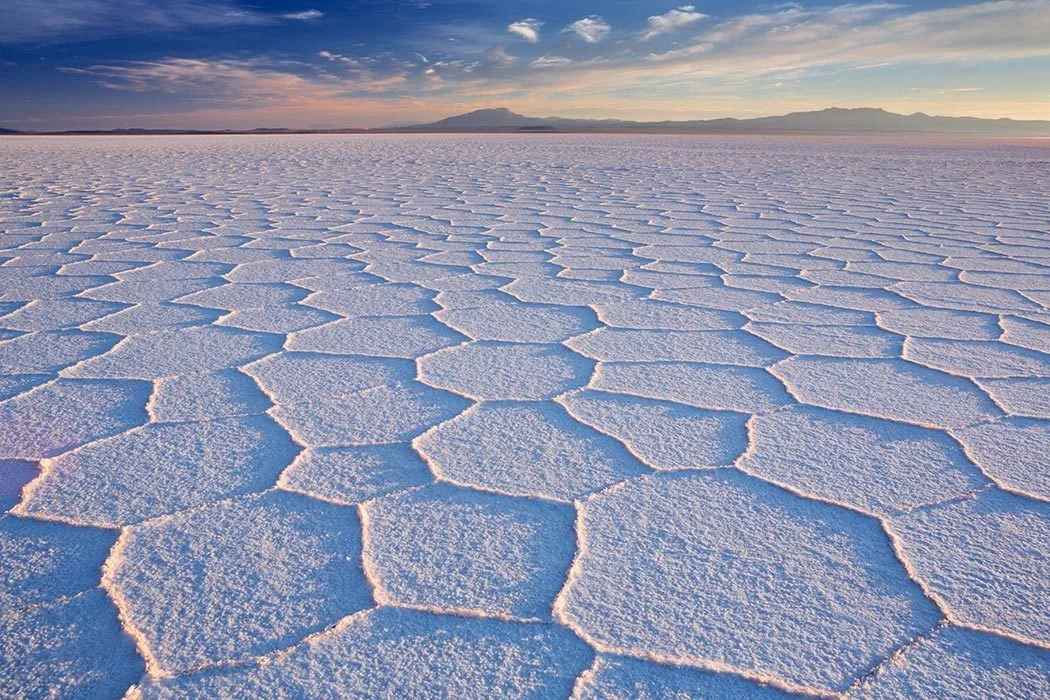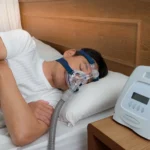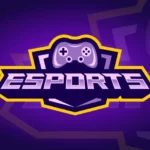
Salar de Uyuni, located in southwest Bolivia, is the largest salt flat in the world, covering over 10,582 square kilometers (4,086 square miles). Renowned for its stunning landscapes and unique natural phenomena, this vast expanse of salt attracts travelers and adventurers from around the globe. With its rich cultural history, significant economic activities, and breathtaking visual spectacles, Salar de Uyuni is not only a remarkable natural wonder but also a vital part of Bolivia’s heritage and economy. Here are some intriguing facts about this extraordinary destination.
Location: Salar de Uyuni is situated in the southwest region of Bolivia, specifically in the Potosí Department. It lies at the edge of the Altiplano, a high plateau that is part of the Andes mountain range. The closest significant town is Uyuni, which serves as a hub for tourists and adventurers looking to explore this vast salt flat. The geographical coordinates of Salar de Uyuni are approximately 20.1338° S latitude and 66.8440° W longitude, placing it in a remote yet breathtaking landscape characterized by stark contrasts of white salt, blue skies, and rugged mountains.
Size: Covering an expansive area of approximately 10,582 square kilometers (4,086 square miles), Salar de Uyuni is recognized as the largest salt flat in the world. This immense size is comparable to the country of Lebanon and makes it a significant geographical feature. The flat’s vastness creates a surreal landscape, often leading to optical illusions where the horizon seems to disappear. The sheer scale of Salar de Uyuni allows for unique photography opportunities, particularly during the rainy season when the flat transforms into a giant mirror.
Elevation: The salt flat is located at an impressive elevation of about 3,656 meters (11,995 feet) above sea level, making it one of the highest salt flats globally. This high altitude contributes to the extreme weather conditions experienced in the region, including significant temperature fluctuations between day and night. The thin air at this elevation can also affect visitors, as they may experience altitude sickness if they are not acclimatized. The elevation plays a crucial role in the unique ecosystem found in and around the Salar.
Formation: Salar de Uyuni was formed from the remnants of ancient lakes that existed in the region thousands of years ago. Around 30,000 to 40,000 years ago, the lakes, primarily Lake Poopó and Lake Minchin, underwent significant evaporation due to climatic changes, leading to the formation of the salt flat. Over time, the evaporation process left behind a thick crust of salt, which is primarily composed of sodium chloride. The geological history of the Salar provides insight into the environmental changes that have shaped the Altiplano region.
Salt Thickness: The thickness of the salt crust in Salar de Uyuni can reach up to 10 meters (33 feet) in certain areas, making it a substantial deposit of salt. This thickness varies across the flat, with some regions being much thinner. The salt crust is not only a striking visual feature but also serves as a valuable resource for local communities who harvest salt for various uses, including culinary and industrial applications. The salt crust’s formation is a result of the evaporation of water from the underlying salt lakes, which continuously replenishes the salt deposits.
Lithium Reserves: Salar de Uyuni is estimated to contain about 7% of the world’s known lithium reserves, a metal that has gained immense importance due to its use in rechargeable batteries for electronics and electric vehicles. The lithium is found in brine beneath the salt crust, and its extraction has become a focal point for Bolivia’s economy. As the demand for lithium continues to rise with the growth of green technologies, Salar de Uyuni is positioned as a key player in the global lithium market, attracting interest from various international companies and governments.
Rainy Season: The rainy season in Salar de Uyuni typically occurs from December to April, during which the flat can be covered by a thin layer of water, creating a stunning mirror effect. This phenomenon transforms the landscape, reflecting the sky and creating a breathtaking visual experience for visitors. The shallow water can reach depths of only a few centimeters, allowing for the reflection of clouds and the sun, making it a popular time for photographers. However, the rainy season also makes certain areas of the Salar inaccessible due to flooding.
Dry Season: In contrast, the dry season from May to November reveals the salt crust, showcasing its unique hexagonal patterns formed by the crystallization of salt. During this time, the flat becomes a stark, white expanse that attracts tourists for its otherworldly appearance. The dry season is also the best time for exploring the Salar, as the solid surface allows for easier travel and access to various attractions, such as the salt hotels and the nearby train graveyard. The dramatic change in the landscape between the seasons highlights the dynamic nature of this unique environment.
Temperature: The average temperature in Salar de Uyuni varies significantly, ranging from -4°C (24°F) at night to 20°C (68°F) during the day. This wide temperature range is influenced by the high altitude and the arid climate of the region. Visitors often experience chilly nights, requiring warm clothing, while daytime temperatures can be quite comfortable for exploration. However, the intense sun during the day can lead to sunburn, so sunscreen and protective clothing are recommended. The temperature variations also affect the salt crust; at night, the cold can cause the surface to contract, while daytime heat causes expansion, contributing to the unique formations seen across the Salar.
Flora and Fauna: Despite the harsh conditions of Salar de Uyuni, the area supports a variety of flora and fauna, most notably several species of flamingos. Among these are the Andean flamingo, Chilean flamingo, and James’s flamingo, which are attracted to the saline waters of the surrounding lagoons. These birds are often seen feeding on the brine shrimp and algae that thrive in the saline environment. The presence of these species highlights the ecological significance of the Salar and its surrounding areas, which provide critical habitats for wildlife. Additionally, the unique adaptations of these birds to high-altitude, saline environments make them a fascinating subject for ornithologists and nature enthusiasts alike.
Tourism: Salar de Uyuni attracts around 60,000 tourists annually, making it one of Bolivia’s most popular tourist destinations. The unique landscape and breathtaking views draw visitors from all around the world, particularly photographers and adventure seekers. Tour operators offer various tours, ranging from day trips to multi-day excursions that explore not only the salt flat but also nearby attractions such as colored lagoons, geysers, and unique rock formations. The influx of tourists has led to the growth of local businesses, providing economic opportunities for the communities surrounding the Salar.
Transportation: The salt flat is accessible by road from nearby towns, with Uyuni being the most common starting point for visitors. Uyuni is well-connected by bus and train services from major cities like La Paz and Potosí, making it a convenient base for exploring the Salar. Once at the Salar, tourists can travel in specially designed 4×4 vehicles that can navigate the salt crust’s rugged terrain. The roads are often unmarked, and local guides are essential for safely navigating the vast expanse of the flat, especially during the rainy season when conditions can change rapidly.
Salt Hotels: There are several hotels made entirely of salt blocks, including the famous Palacio de Sal, which is constructed using salt harvested from the Salar. These unique accommodations provide visitors with a one-of-a-kind experience, allowing them to stay in a building that is literally built from the surrounding environment. The walls, furniture, and even the decorative elements are crafted from salt blocks, offering a fascinating insight into the local culture and resources. Staying in a salt hotel is not only a novel experience but also supports sustainable tourism practices in the region.
Cultural Significance: The indigenous Aymara people consider Salar de Uyuni a sacred place, deeply rooted in their cultural and spiritual beliefs. The Salar has historical importance, as it was traditionally used as a trade route by indigenous peoples long before the arrival of Europeans. The Aymara community continues to engage in practices that honor their heritage, including the harvesting of salt and the preservation of traditional customs. The cultural significance of the Salar is often shared with visitors, enhancing their understanding of the region’s history and the relationship between the land and its people.
Exploration: The Salar was first explored by Europeans in the 19th century, with the first significant expedition led by the French geographer and explorer, Alcide d’Orbigny, in 1830. His explorations contributed to the Western understanding of the region’s geography and natural resources. Over the years, various scientific expeditions have studied the Salar, examining its geology, hydrology, and unique ecosystems. These explorations have not only advanced scientific knowledge but have also paved the way for tourism and economic development in the area.
Record Size: It is estimated that Salar de Uyuni contains about 7 million tons of salt, making it one of the largest salt deposits in the world. This massive quantity of salt is a result of the evaporation of ancient lakes and the continuous accumulation of salt from the surrounding mountains. The salt is harvested by local communities, who engage in traditional methods to extract and process the salt for both local consumption and export. The sheer volume of salt in the Salar underscores its significance as a natural resource and its role in the local economy.
Geothermal Features: Nearby, there are geothermal fields like the Sol de Mañana, which features bubbling mud pots and hot springs. These geothermal areas are characterized by their high temperatures and unique geological formations, providing a stark contrast to the flat, arid landscape of Salar de Uyuni. Visitors can experience the natural wonders of these geothermal features, which are often included in multi-day tours of the region. The heat from the Earth’s interior creates vibrant colors and unusual formations, making them a popular attraction for tourists seeking to explore the diverse landscapes of Bolivia.
Solar Power Potential: The region surrounding Salar de Uyuni has significant potential for solar energy generation due to its high altitude and clear skies. With an average of over 300 sunny days per year, the area is ideal for solar power projects. The Bolivian government and various organizations are exploring the development of solar energy initiatives in the region, which could provide sustainable energy solutions for local communities and contribute to the country’s energy independence. The combination of abundant sunlight and vast open spaces makes Salar de Uyuni a prime candidate for renewable energy development.
Film Location: Salar de Uyuni has gained international fame as a stunning film location, prominently featured in the 2004 film “The Motorcycle Diaries,” which chronicles the early travels of Che Guevara. The breathtaking landscape, with its vast expanse of white salt crusts and striking vistas, provides a dramatic backdrop that captures the beauty of Bolivia’s natural scenery. This unique environment has also been showcased in various documentaries and travel shows, drawing attention to its surreal beauty and cultural significance.
Temperature Variation: The climate at Salar de Uyuni is characterized by extreme temperature variations, with differences exceeding 20°C (36°F) between day and night. During the day, temperatures can soar to around 20°C (68°F), making it pleasantly warm under the sun. However, as night falls, temperatures can plummet to near freezing, sometimes reaching as low as -5°C (23°F). This significant fluctuation is a result of the high altitude of the salt flats, which sit at approximately 3,656 meters (11,995 feet) above sea level, leading to rapid heat loss after sunset.
Salt Extraction: The extraction of salt is a vital economic activity for local communities surrounding Salar de Uyuni. The salt flats cover an area of over 10,582 square kilometers (4,086 square miles) and contain an estimated 7 million tons of salt. Local families engage in traditional methods of harvesting salt, which involves collecting the salt crust from the surface and processing it for sale. This activity not only supports the livelihoods of many residents but also contributes to the local economy, as the salt is often sold in markets and to businesses throughout Bolivia.
Historical Use: Long before the arrival of Europeans, the indigenous peoples of the region utilized Salar de Uyuni as a major trade route. The salt flats served as a crucial point for trade and commerce among various indigenous groups, facilitating the exchange of goods and resources across the Andean region. This historical significance highlights the cultural heritage of the area, as the salt flats are intertwined with the traditions and livelihoods of the local communities that have inhabited the region for centuries.
UNESCO World Heritage Site: The surrounding areas of Salar de Uyuni, including the Eduardo Avaroa Andean Fauna National Reserve, have been recognized as a UNESCO World Heritage Site due to their exceptional natural beauty and biodiversity. This designation helps protect the unique ecosystems found in the region, which are home to various species, including flamingos, llamas, and vicuñas. The reserve is not only important for conservation efforts but also attracts eco-tourists who wish to experience the stunning landscapes and rich wildlife of the Bolivian Andes.
Visibility: During the rainy season, which typically occurs between December and April, Salar de Uyuni transforms into the world’s largest natural mirror. When covered with a thin layer of water, the salt flat creates a breathtaking reflection of the sky, making it a popular destination for photographers and travelers seeking to capture its ethereal beauty. This phenomenon draws visitors from around the globe, as the mirror effect can create stunning optical illusions and a sense of walking among the clouds, providing a unique experience unlike any other.
Accessibility: Salar de Uyuni is located approximately 200 kilometers (124 miles) from the nearest city, Potosí, making it somewhat remote but accessible for adventurous travelers. The journey to the salt flats typically involves a drive through scenic landscapes, including mountains, valleys, and other natural features. Various tour operators offer guided trips from nearby cities, allowing visitors to explore the vast expanse of the salt flats, experience the local culture, and witness the stunning beauty of this unique destination. This accessibility has helped establish Salar de Uyuni as a must-visit location for those traveling in Bolivia.
Salar de Uyuni FAQ
1. What is Salar de Uyuni?
Salar de Uyuni is the world’s largest salt flat, located in southwestern Bolivia. It covers an area of approximately 10,582 square kilometers (4,086 square miles). The flat surface is covered with a layer of salt, which can reach a thickness of up to 10 meters (33 feet) in some places.
2. When is the best time to visit Salar de Uyuni?
The best time to visit Salar de Uyuni depends on what you want to experience.
- March to April: This is the rainy season, and the salt flats can be covered in a thin layer of water, creating a stunning mirror effect.
- May to October: This is the dry season, and the salt flats are more exposed. You can walk on the salt and explore the nearby islands.
3. How do I get to Salar de Uyuni?
The most common way to get to Salar de Uyuni is by taking a tour from Uyuni, a town in southwestern Bolivia. You can fly to Uyuni from La Paz or other cities in Bolivia.
4. What can I do in Salar de Uyuni?
- Explore the salt flats: You can walk on the salt flats, take photos, and enjoy the surreal landscape.
- Visit nearby islands: There are several islands in the middle of the salt flats, including Isla Incahuasi, which is home to giant cacti.
- See the mirror effect: During the rainy season, the salt flats can be covered in a thin layer of water, creating a stunning mirror effect.
- Visit the Colchani salt mines: You can visit the Colchani salt mines, where salt is extracted from the salt flats.
- See the Red Laguna: The Red Laguna is a lake located near Salar de Uyuni. It is home to a variety of flamingos.
5. What is the weather like in Salar de Uyuni?
The weather in Salar de Uyuni is dry and cold. The average temperature is around 10 degrees Celsius (50 degrees Fahrenheit). The temperature can drop below freezing at night.
6. What should I pack for a trip to Salar de Uyuni?
- Warm clothing, including a jacket, sweater, and gloves
- Comfortable shoes, such as hiking boots or sneakers
- Sunscreen and a hat
- A camera
- A flashlight
- A water bottle
- A first-aid kit
7. Is it safe to visit Salar de Uyuni?
Yes, it is safe to visit Salar de Uyuni. However, it is important to be aware of the altitude, as the salt flats are located at a high elevation. Altitude sickness can occur, so it is important to drink plenty of fluids and avoid strenuous activity.
8. How much does a trip to Salar de Uyuni cost?
The cost of a trip to Salar de Uyuni varies depending on the length of the tour, the type of accommodation, and the activities included. However, you can expect to spend around $200-$300 per person for a 3-day tour.
9. Can I visit Salar de Uyuni on my own?
It is possible to visit Salar de Uyuni on your own, but it is not recommended. The salt flats are vast and can be difficult to navigate. It is best to join a tour, as this will ensure that you see all the highlights and have a safe and enjoyable experience.









